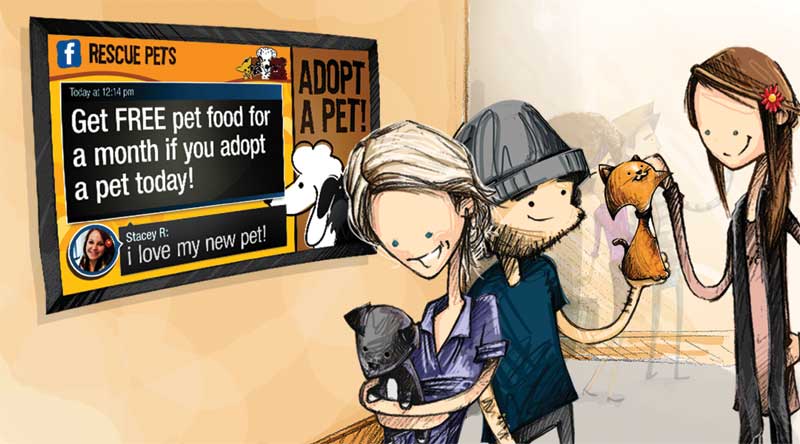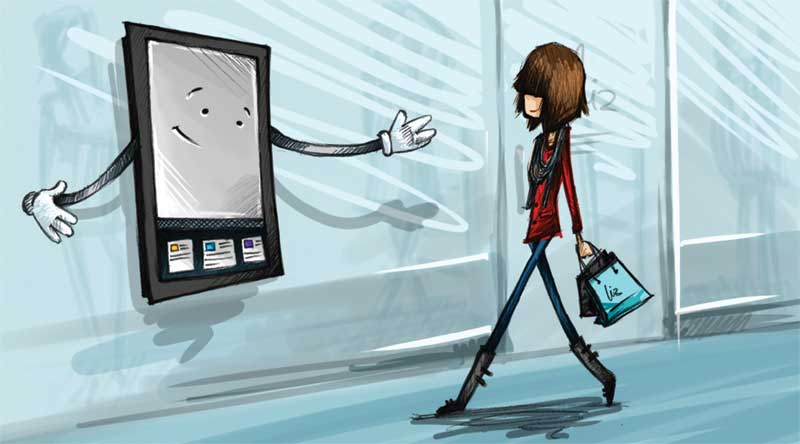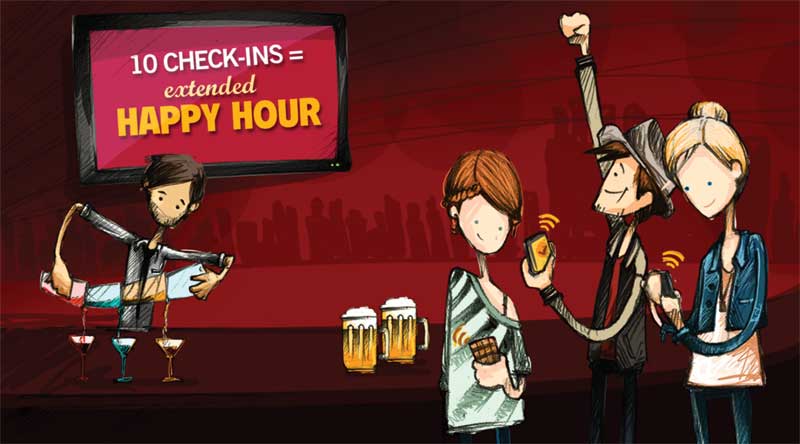Digital Signage: Best practices for content creation
by all | 12 December 2016 9:16 am

Images courtesy Insteo
By Jim Nista
When it comes to creating digital signage content, the client’s goals must be the first priority, not the technology. Design also matters, as it is important not to overwhelm passersby. And in addition to developing content in the first place, it will need to be kept fresh over the longer term.
Steps to a successful project
Goals trump content and technology. The first question should be, “What does the client want to achieve with digital signage?” Some of the common answers include reducing perceived wait times (e.g. for customers in line at a bank or store counter), keeping viewers engaged, improving knowledge through education, selling more products or simply achieving a ‘coolness’ factor.
The real question, then, is what the client wants viewers to experience. Without knowing these goals, there is no way to know which size or type of screens to use, how and where to install them, where to source content and which content management software (CMS) to use.
Based on a project’s goals, the right mix of content—e.g. video, graphics, news, social media, interactivity, mobile integration—will start to become clear. And depending on the specific nature of that content, it may be (a) developed in-house or (b) sourced from outside professionals.
Technology, of course, will need to match the content. There is no point purchasing a touch screen for a digital menu board that will be displayed behind a fast-food counter! At this phase of the project, it is possible to begin specifying hardware, software and plans for ongoing content updates.
Choosing the right software will depend on how the content will need to be supported. In some cases, digital signage is used simply for a slide show. More frequently, the content will need to be editable. And with touch screens and other interactive displays, the software must be more complex in its design and capabilities.

A digital sign only have five seconds to catch a viewer’s attention.
Similarly, strategies and requirements for content updates will vary. They may be rolled out daily (perhaps by the client), weekly or monthly. The process can also be automated to make it easier for everyone involved.
Design factors
One of the simplest factors to keep in mind for digital signage content is the 3-m (10-ft) rule. This is the average viewing distance to take into consideration when determining the size of graphics and text for maximum visibility.
Another is the five-second rule. This is the maximum period a digital sign will have to capture the attention of the viewer.
Further, the content that will be viewed during this short period needs to be prioritized in order of importance, as the audience will only remember up to three elements of the content. It is therefore important to ‘lead the eye’ through the design and layout.
Smooth, purposeful animation is one of the best ways to lead viewers’ eyes to what the client wants them to see. A clean overall design, balancing form with function, will also maximize the opportunity for reaching and engaging viewers, regardless of the specific project.

Nearly everyone carries a smartphone, so there are many opportunities for interactivity even without a touch screen or gesture recognition.
Guiding principles
Content stands out when it is unique and succeeds when it is genuine, legitimate and sincere. It is important not only to be concise in choosing what to display on a screen, but also to give the audience something it wants, needs or will be entertained by.
Relevant content is timely, local and ‘one- to-one,’ in that it fits the unique needs of its audience. The idea is to create a conversation viewers can participate in, by using engaging content that connects with them on an emotional level. In this respect, one can borrow best practices from static out-of-home (OOH) advertising, but with digital OOH (DOOH) advertising, interactivity can and should be ubiquitous. Nearly everyone carries a smartphone, for example, so there is an opportunity to make it simple to interact with a screen even if it is not touch-sensitive or gesture-enabled. In fact, it is much easier to promise to reward people for participating via smartphone than it is to make them perform acrobatics.
Further, with the dynamic nature of digital signage content, there is a strong opportunity to be inspiring. Digital signage has been shown to drive changes in consumer behaviour in ways other media cannot.
For these reasons, DOOH is poised to revolutionize OOH, but that cannot happen without a true return on investment (ROI). Goals need to be defined with real metrics. In retail, for example, sales conversions are what matter, not mere impressions, which is why it is so important to issue a simple call to action and to provide simple ways for the audience to respond.

The client’s goals also need to be defined with real metrics, so the success of a project is measurable.
Maintaining consistency
If ‘content is king,’ then ‘consistency is queen.’ When determining the importance of content updates during the goal-planning phase, there should also be a proposal regarding how that content is to be maintained. Indeed, for digital signage providers, content maintenance is often the most profitable part of a project.
As mentioned, some screens are little more than digital posters, displaying a slide show of images which either the sign shop or the client may provide. Even looping videos can be do-it- yourself (DIY) for clients today.
The next level of complexity is the use of editable templates for such content as menus, lists, directories and ad rotators. More specialized resources will be needed to add multi-screen co-ordinated content, wayfinding maps, custom-produced videos, room scheduling, news/weather feeds and other real-time information, social media and/or mobile integration via Quick Response (QR) Codes or possibly near-field communication (NFC).
Finally, at the most complex and expensive level are advanced forms of functionality like augmented reality (AR), motion-based interactivity and mobile integration whereby the viewer’s smartphone actually controls on-screen content. As such functions are best left to the professionals, they can be the most profitable.
Jim Nista is CEO and creative director of Insteo, which creates content for digital menu boards and other screens. This article is based on a seminar he presented at the International Sign Association’s (ISA’s) 2016 International Sign Expo. For more information, visit www.insteo.com[1] and www.signs.org[2].
- www.insteo.com: http://www.insteo.com
- www.signs.org: http://www.signs.org
Source URL: https://www.signmedia.ca/digital-signage-best-practices-for-content-creation/